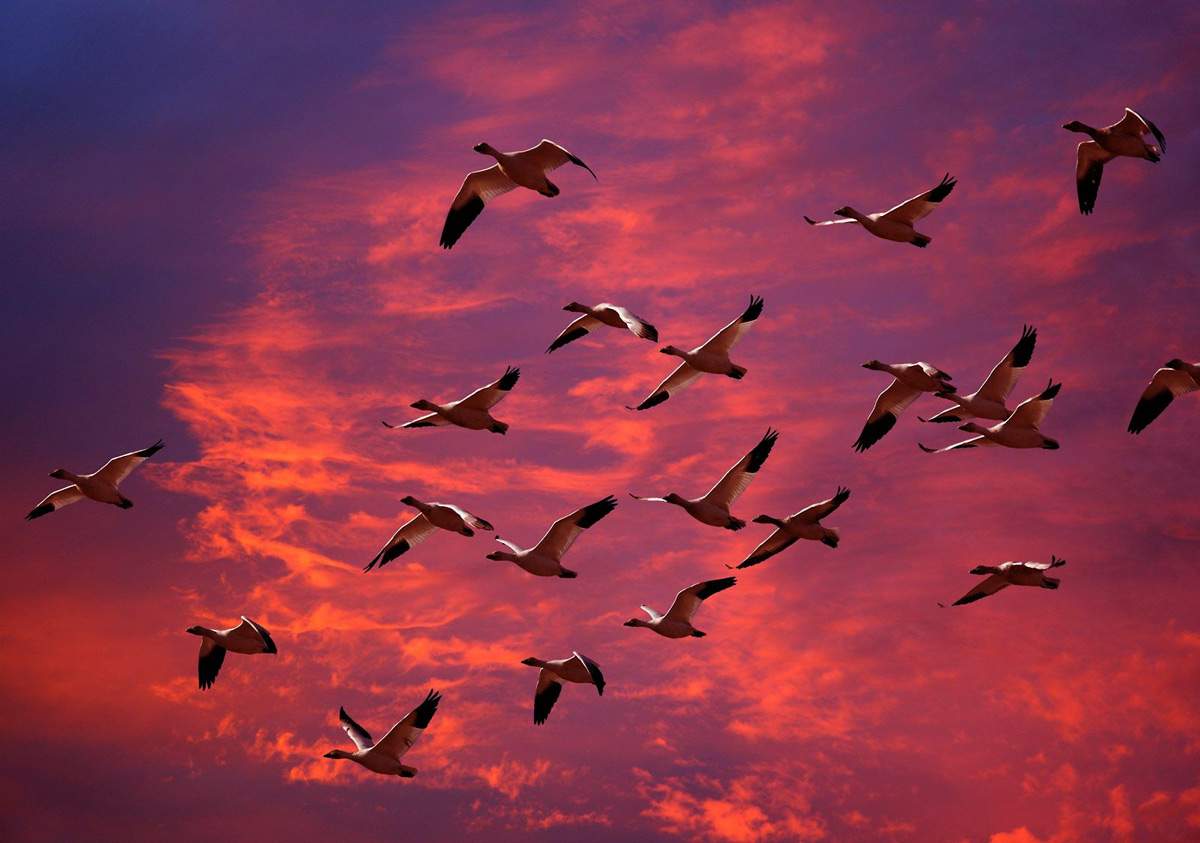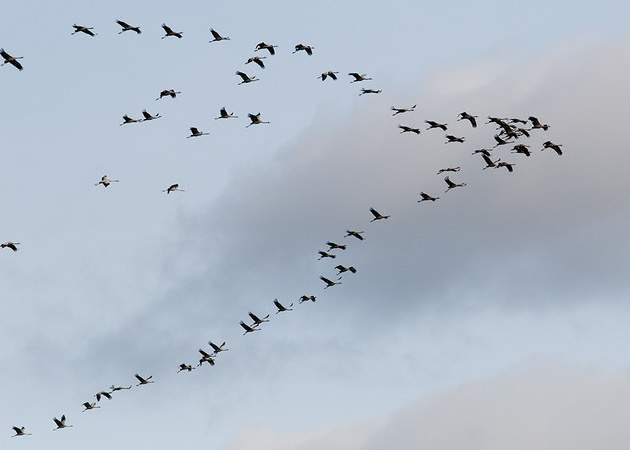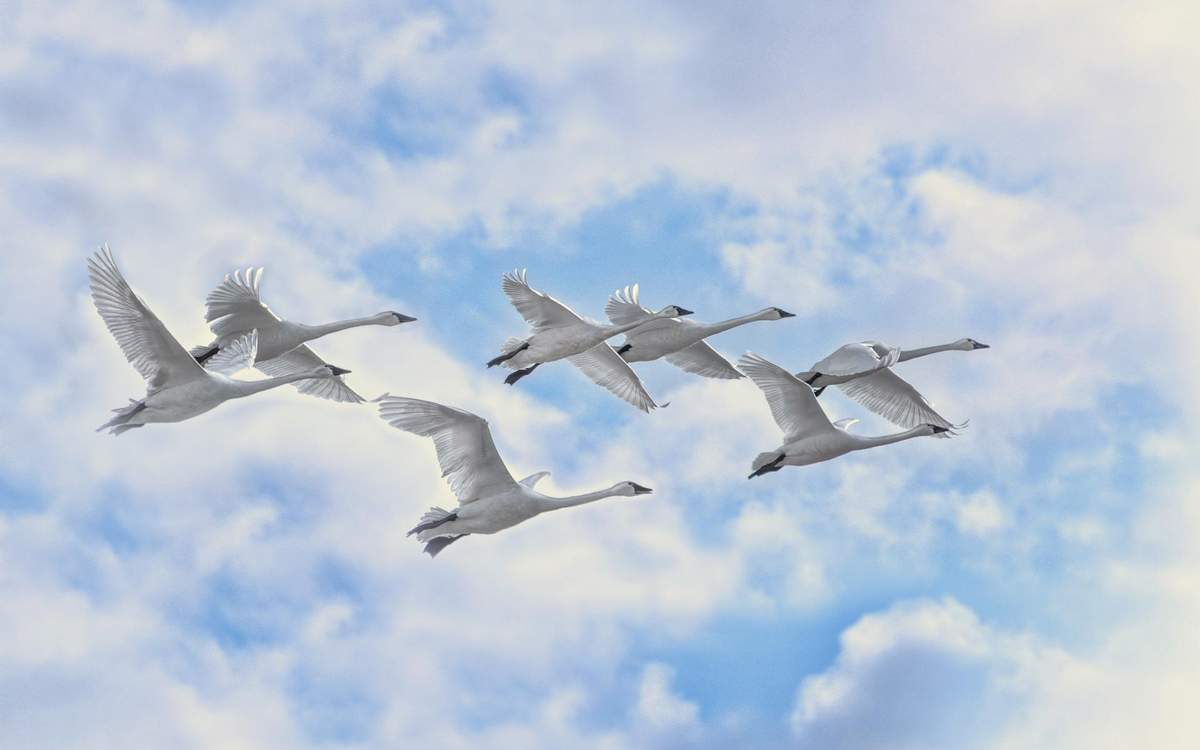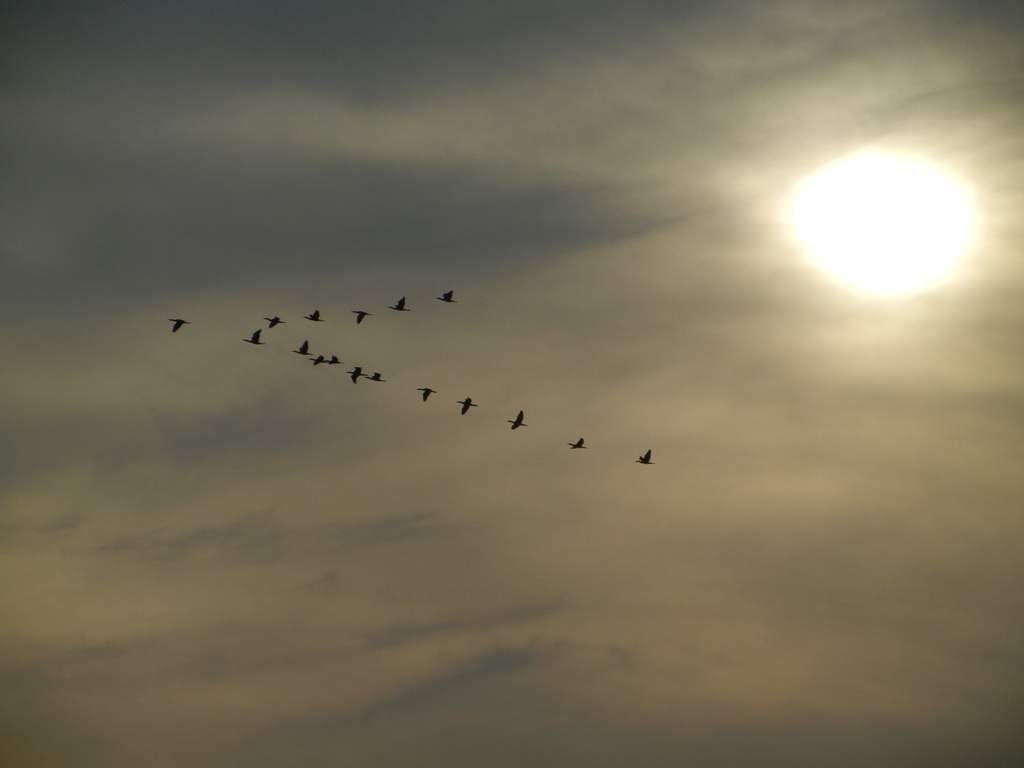There are some mysteries behind the seasonal migrations of birds, for example, how do they determine the start time of the flight, and how do they manage to find their native nest with such accuracy? You can learn about this, and what pushes birds to change places, in this article.
Riddles of bird flights
Flights of birds have shaken the human imagination since ancient times. This is evidenced by oral traditions relating to the pre-literate era of human existence. The great Homer wrote about this three thousand years ago, this question confused the biblical sages, and one of the greatest minds of antiquity, Aristotle, fought over his solution.
However, despite all the efforts of Aristotle and other inquisitive minds, a person cannot yet give an exhaustive answer to the question of how birds determine the time of flight. In the context of this article, migration refers to seasonal movements of birds in autumn to the south and in spring to the north, as well as their movements from the continental depths to the coast and from the plains to the highlands.
What is the reason for the migration of birds, we imagine quite well. For example, some species simply go to warmer climes because they are unable to endure life in winter conditions.
Those species of birds whose diet is based on small rodents or insects of certain species simply cannot find food for themselves in the cold.
It may seem strange, but low air temperature in itself is not a sufficient reason for flying. Few people know about this, but birds are distinguished by their unique frost resistance. For example, such a native of hot latitudes as a canary is able to survive at a temperature of about 45 degrees Celsius below zero, but for this the bird must have enough food. Therefore, a much more weighty argument for a change of residence is not the cold, but the hunger associated with it.
When do birds fly away?
Regardless of what reasons birds find for flights (and there are a lot of such reasons and the matter is not limited to one hunger), the question remains “how do birds know that it is time to leave their homes and change their place of residence?”. Observations by ornithologists have established that birds fly away at about the same time every year, and exactly when the seasons change. But what is the most reliable, unmistakable sign of this change? Most would agree that this is a change in the length of the day.
The breeding season for birds falls in the summer, and this is also closely related to flights. Only in this case, the birds move in a northerly direction. Certain glands in the bird's body begin to produce substances related to reproduction, this happens in the spring, and the bird, feeling the need to procreate, heads north, where summer begins.
Consequently, the disappearance of food and the change in the length of the day give the bird a signal that it is time to go to warmer climes. And in the spring, the instinct of procreation tells the bird that the time has come to fly north. Of course, there are other factors that we do not yet fully understand, but it is precisely those listed above that are the key that will solve the mystery of bird flights.
Where do birds get a compass?
Researchers are still tormented by the question, “how do birds manage to find their way to the right place during flights?”. At the end of summer, in various parts of the world, many birds, having left their native places, go to the south for wintering. Often, at the same time, they go to completely different continents, overcoming distances of several thousand kilometers. With the arrival of the same spring, these birds do not just return to their native country, but often to the same nest located in the same house or in the same tree.
How do they manage to find their way? To find the answer to this question, many interesting experiments have been done. For example, during one of them, shortly before the time of the autumn migration, a group of storks was taken from their native nests and moved to another place. Once in a new place, they would have to take a completely different direction in order to get to their destination. Few people believed in this, but when the time came for the flight, they did just that, determining very precisely in which direction they should fly in order to reach their desired place. This suggests that birds have some kind of instinct that tells them in which direction to move as winter approaches.

The ability of birds to find their way home is amazing. For example, during another experiment, birds were taken by plane to a distance of 400 miles from their native places. However, when the birds were released, they returned to their home.
But, it must be admitted that if we say that instinct leads the birds in the right direction, then this will explain practically nothing. How exactly does this instinct work? How exactly do birds find their way home? After all, everyone knows that birds do not receive any lessons in geography and orientation on the ground.
Parents cannot teach this either, because very often they themselves do it for the first time. In addition, flights often take place at night and, therefore, birds are not able to make out landmarks that could help them determine their location. And for birds flying over large expanses of water, there can be no landmarks at all.
According to one hypothesis, birds have the ability to sense the magnetic fields surrounding the Earth.
Magnetic lines are located in the direction from the north magnetic pole to the south pole. It is possible that these lines are guides for birds. However, no matter how good this hypothesis may be, it has not received any confirmation.

In fact, science has not yet found an exhaustive explanation of how birds manage to find their way during their migrations and how they manage to find their native places. By the way, one interesting historical fact is connected with bird flights.
When Christopher Columbus was already sailing to the shores of America, he caught sight of large flocks of birds heading southwest. This indicated that there was land nearby, and he changed course, following the birds in a southwesterly direction. If he had not done so, he would have landed on the shores of Florida, and not in the Bahamas.
Why fly away?
What distances can birds cover? Everyone knows that birds migrate regularly, and people have long used the departure and return of certain birds to determine the onset of the next season. However, until the end, no one understood why the birds set off on such a long journey.

It is not possible to explain this by a change in temperature alone. Thanks to feathers, the bird can perfectly protect itself from the cold. Yes, with the approach of cold weather, there is less food and this can be a powerful argument for changing habitat. It would seem that everything is clear. But, then why do the birds come back again in the spring? Some researchers suggest that there is a relationship between the instinct of procreation in birds and climate change.
Are we flying far?
Regardless of the reasons behind bird migrations, there is no doubt that birds are the most active travelers in the animal kingdom. Well, if you try to find a champion, among the champions, then those will be the Arctic terns. In just one year, during the flights, they cover a distance equal to approximately 22,000 (this is not a mistake: twenty-two thousand!) miles.

Terns nest in vast areas, from the US state of Massachusetts to the Arctic Circle. To the Arctic, these birds fly in about twenty weeks, covering about a thousand miles every week.
The bulk of the birds during the flights make fairly short hauls.
American golden plovers make long, non-stop flights over ocean space. This bird can fly from Nova Scotia in Canada to South America, covering 2,400 miles of water without a single stop.
Do birds fly away strictly “on schedule”
It is also of interest whether the birds start their migration every year on the same day. A lot of articles and studies have been written on this topic, but despite them, many people believe that this is exactly the case. However, those that fly out every year on the same day have not yet been found in nature. True, some species of birds are quite close to this, but no more.







